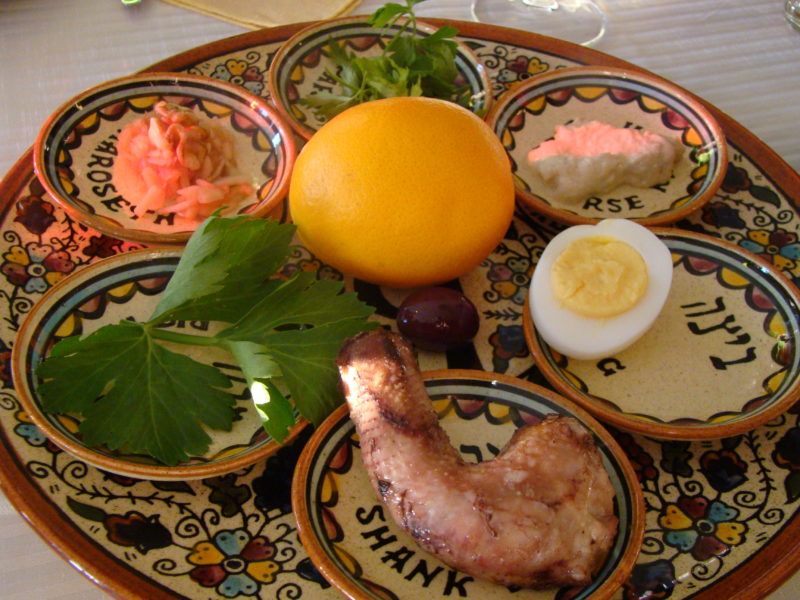Now, don’t get me wrong. I have nothing against matzah balls. But if your seder food has become somewhat repetitive, then it may be time to widen your Pesach culinary repertoire. And where better to search than in the collective Jewish cookbook thanks to the wandering of Jews throughout the world?
Before we get to the recipes, please note that not only do Passover food traditions vary around the world but so do the restrictions. For example, earlier this month the Conservative movement overturned the 800-year-old ruling banning Ashkenazi Jews from eating rice and beans, but will everyone follow it or stick to tradition? Sephardic Jews, of course, have been eating kitniyot on Passover for generations. When in doubt about a food, always check with a rabbi.
READ: FOOD CAN BE HEALTHY AT PESACH TOO
In his book Mangiare alla Giudia (Eating the Jewish Way) Ariel Toaff, a professor at Bar-Ilan University, traces Italian Jewry’s culinary history. Although his book doesn’t contain recipes, you could use its research to reconstruct a historic Italian seder. How about sitting down to some “scacchi” (checkers), squares of matzah soaked in capon broth, browned in goose fat and baked in alternating layers with cooked greens or poultry giblets? The menu for a seder in the central Italian city of Urbino in April 1892 included scacchi, boiled meat served with goose salami, salad and desserts made from marzipan, matzah meal and quince preserves.
If you’re looking for some contemporary Italian Pesach recipes, you’ll find directions for two seders’ worth here.
From Italy, travel south to Ethiopia to see how Jews there would mark the holiday with a very different kind of seder. “The ritual meal took place outdoors, by moonlight. The Jews sat on the ground, separated by age and gender. The sparse meal, of kita (Ethiopian matzah) and meat (ritually slaughtered cow or sheep), was eaten rapidly, as if indeed they were fleeing from Egypt.”
If you love eggs, then try to get invited to a traditional Yemenite seder where historically eggs took centre stage during the meal. “A range of different types of egg would be available including some sort of egg cake consisting of egg and chopped potatoes, fried egg, omelettes, and of course hard-boiled egg,” said Guy Young of North London’s Adeni (Yemenite) community. “Nowadays most of the Adenim have a more substantial main meal during seder night while a few Adeni families still continue the traditions of their ancestors and eat egg!”
I don’t think this particular Jewish community has been around quite as long as Yemen’s or Italy’s or Ethiopia’s but I was intrigued to see that Jews in Alaska have begun to develop their own local holiday fare. Ellyn Goodrich is one of Alaska’s 5,000 Jews, the so-called “Frozen Chosen.” Her Alaskan halibut and salmon gefilte fish terrine is baked in a bundt pan and unmolded, for a festive look.
Aside from the matzah and marror, perhaps the most distinctive food at the seder is the charoset (also known as “charoses”), often a blend of walnuts, wine and apples that is reminiscent of the mortar used by the Israelites during their forced labour in Egypt. The Jewish Food Archives and MyJewishLearning.com have collected over forty variations including those from Morocco (dates, cinnamon, cloves), Piedmont (chestnuts, orange zest and hard boiled eggs) and California (prunes, dates and avocado). But given the nature of the holiday, what could be more appropriate than charoset from Egypt (dates, sultana raisins and walnuts)?
The RFCJ Archive is the work of hundreds of people from around the world who have a Jewish recipe to share. Delving into the Passover section can be a bit daunting because the holiday only lasts eight days (seven in Israel). Here’s a small sample of what you’ll find: fried Mexican gefilte fish, Sopa di Galina (curaçao chicken soup with tomatoes), Khoresht Garch (Persian veal and mushroom stew), Masa Tiganitas (Sephardic matzah brei), Greek lamb stew with romaine lettuce and dill and Hungarian dobostorte.
One of the de facto Passover foods that I can certainly do without are those coconut-macaroons-in-a-vacuum-tin. Comes Jennifer Abadi with a Syrian-Jewish alternative, Ka’ik ib’Fis’dok. This flourless variety of macaroons is based on pistachios, both salted and unsalted. Looking for more? Check out Abadi’s blog: Too Good to Passover: Sephardic Passover Dishes & Memories – From India to Italy.
READ: PASSOVER: ‘TA’AM’ TO GATHER TOGETHER AROUND THE TABLE
I was fortunate to chance upon a mouth-watering article from the New York Times from 1985 in which author Marian Burros samples Passover foods that Sephardic, Oriental and Ashkenazi women had brought to one Manhattan home. I particularly enjoyed her description of the food of Vicky Nahmad, whose ancestors left France for Egypt in 1790. “[Nahmad’s] seder begins with vegetable soup, followed by veal stew seasoned with cardamom, turmeric, lemon and garlic and served over rice that has been cooked until it forms a crust. Her recipe for fried matzoh served in a sweetened syrup is an elaborate version of the Ashkenazic matzoh brei, a savory often served for breakfast.”
And here’s the kicker. “The matzoh balls on the seder table are a comparatively recent addition; Mrs. Nahmad said she added them because her family, which arrived in New York in 1959, has come to love them.”
Contact Mark Mietkiewicz via email here.
Photo: My Back Pages
